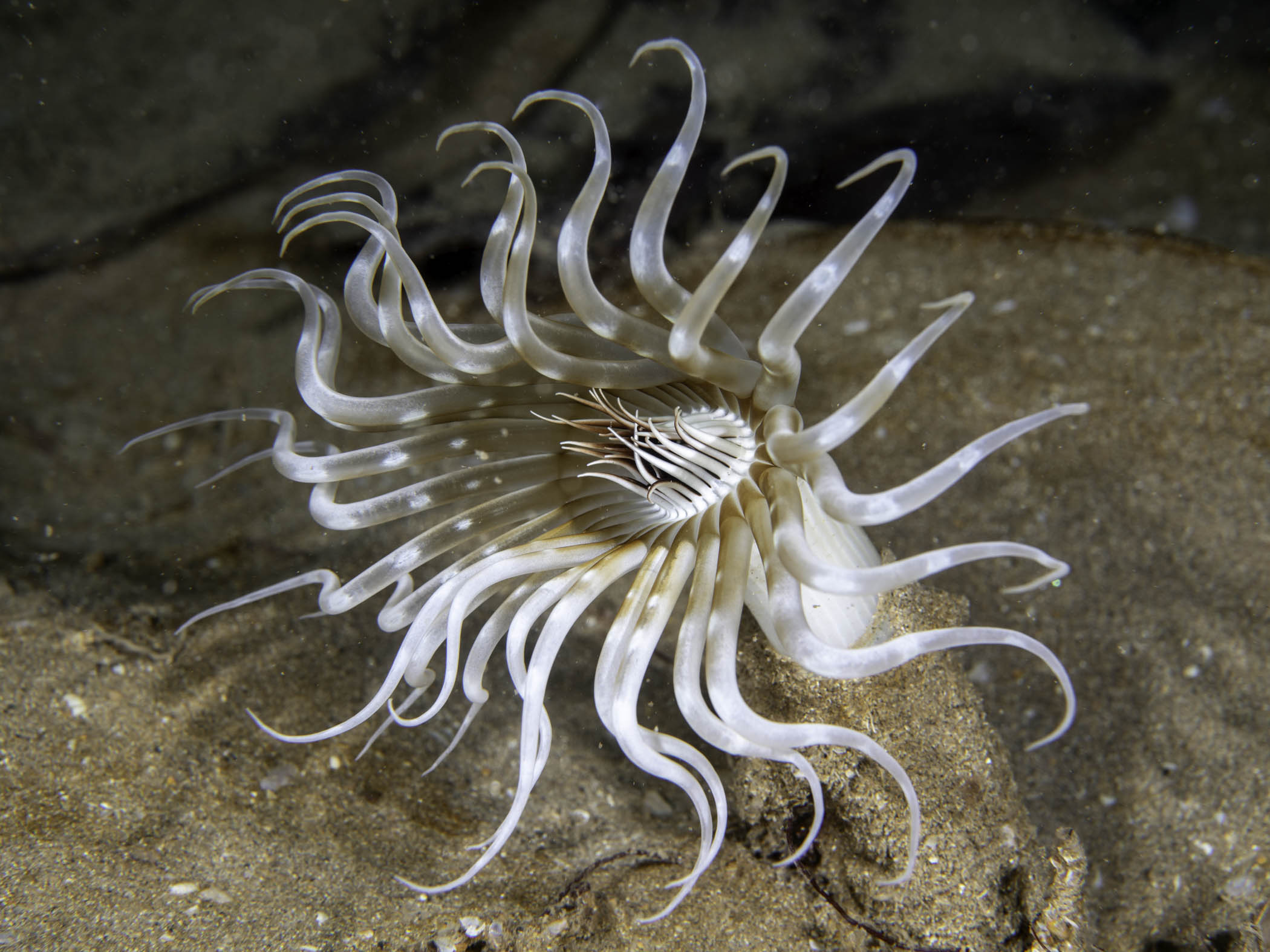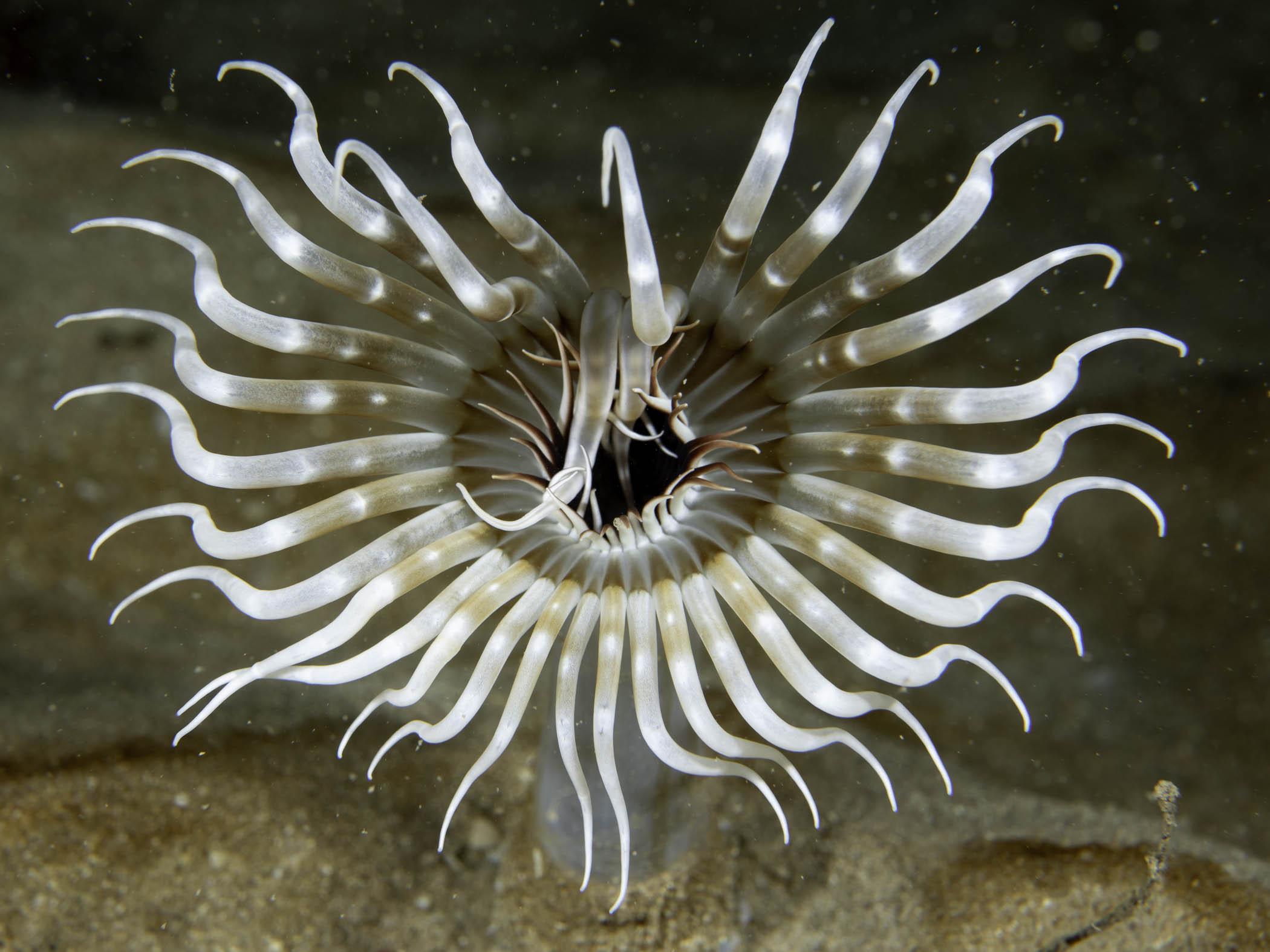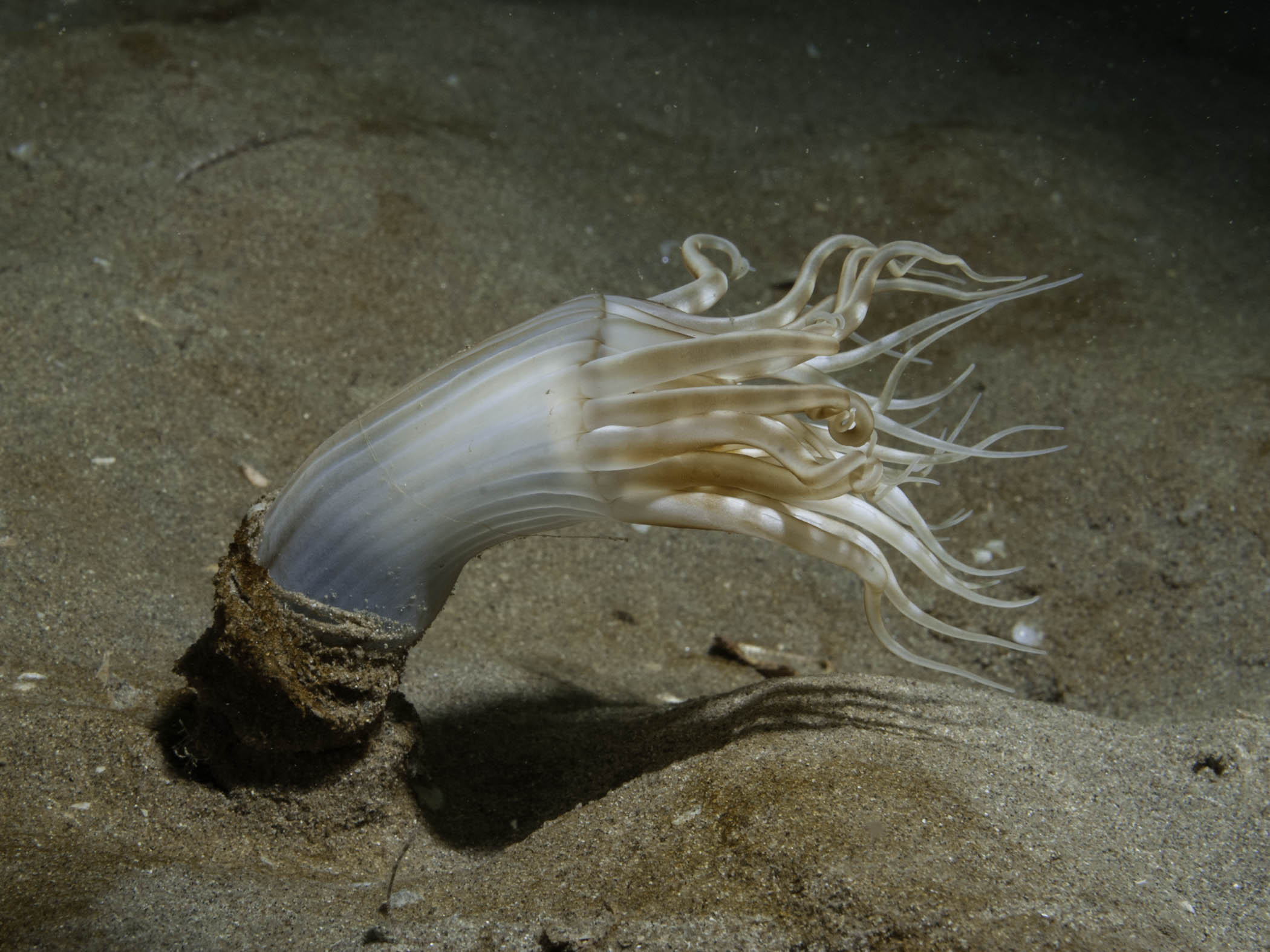| CNIDARIA : Ceriantharia : Arachnactidae | SEA ANEMONES AND HYDROIDS |
Arachnanthus sarsi Carlgren, 1912
 |
| Arachnanthus sarsi |
Description: The overall appearance of this burrowing cerianthid anemone is superficially similar to Synarachnactis lloydii, however Arachnanthus sarsi is much larger and has fewer tentacles. The tentacles are arranged in two cycles, there are 30 marginal (outer cycle) and 30 labial (inner cycle) tentacles. The labial tentacles point inwards and upward to form a cone, this feature is distinctive and readily distinguishes this species from Synarachnactis lloydii. Up to about 200 mm in height when expanded.
Habitat: Lives in a parchment-like tube in mud, sand or shelly mud sediment at 10-36 m. May be partly nocturnal in behaviour.
Distribution: Recorded in Britain from the southeast coast of Coll, the islands to the south of Oban, St. Kilda and a few other sites in western Scotland, Rathlin Island, Co Antrim and Malin Beg, Co Donegal in Ireland.
Key Identification Features:
- Tentacles in two cycles; marginal tentacles about 30 in number.
- Lives free within a long, buried tube.
Distribution Map from NBN: Arachnanthus sarsi at National Biodiversity Network mapping facility, data for UK.
iNaturalist: Arachnanthus sarsi at iNaturalist World Species Observations database.
GBIF data for Arachnanthus sarsi
WoRMS: Arachnanthus sarsi at World Register of Marine Species. Accepted name: Arachnanthus sarsi Carlgren, 1912. AphiaID: 101007.
Classification: Biota; Animalia; Cnidaria; Anthozoa; Hexacorallia; Ceriantharia; Penicillaria; Arachnactidae; Arachnanthus
| Previous species | Next species |
| Picton, B.E. & Morrow, C.C. (2024). Arachnanthus sarsi. Carlgren, 1912. [In] Encyclopedia of Marine Life of Britain and Ireland. https://www2.habitas.org.uk/marbiop-ni/speciesaccounts.php?item=D10920. Accessed on 2025-04-04 |

